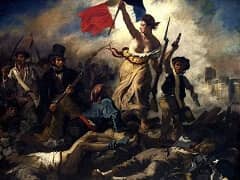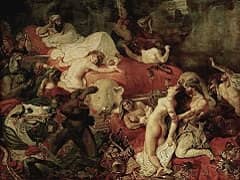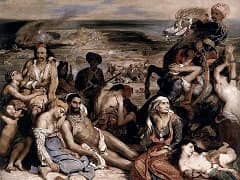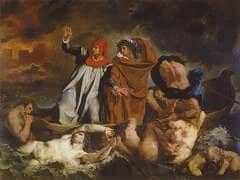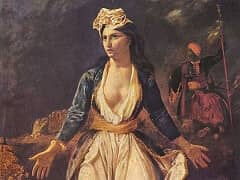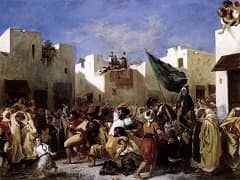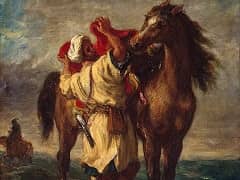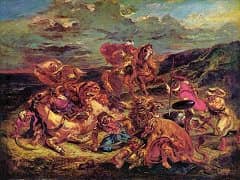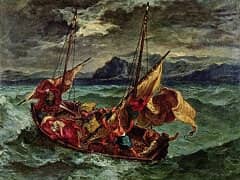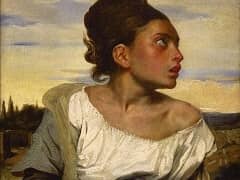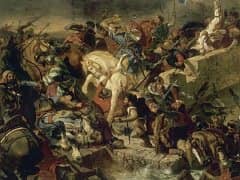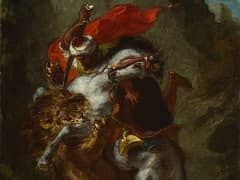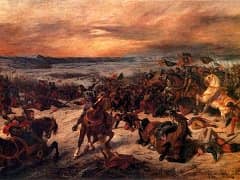The Expulsion of Heliodorus by Eugene Delacroix
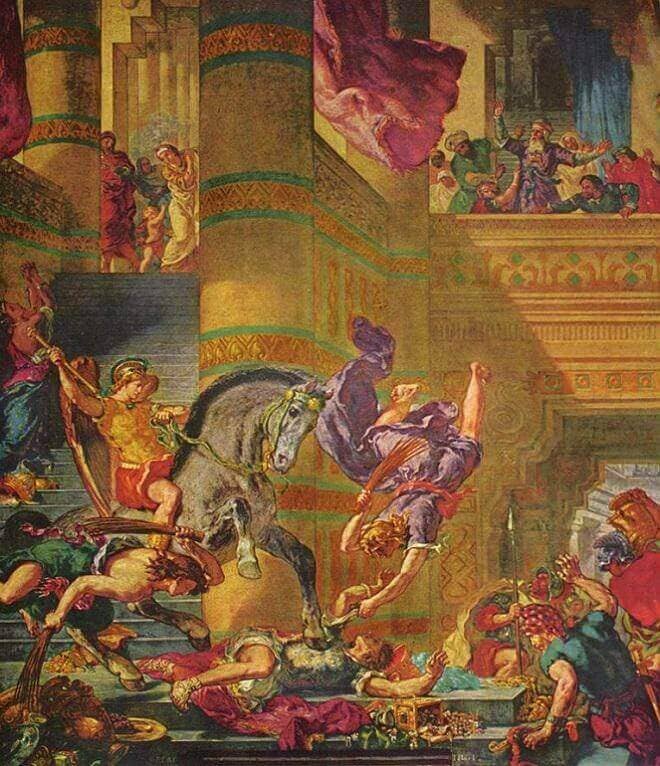
This Biblical subject, taken from the Second Book of Maccabees, depicts Heliodorus, prime minister to Seleucus IV Philopator, king of Syria in the second century B.C., who was sent to seize the treasures of the Temple of Jerusalem. The artist borrows it from Titian's famous fresco at the Vatican, but treats it in a very different manner. The sumptuous decor, the passionate fire of the characters, the wealth of color, the contrasting lights and shadows, once again place Delacroix in the lineage of the great Venetians - Veronese and especially Tintoretto - but with what added daring and originality of invention! The dynamic strength of the avenging angels caught and fixed in flight doubtless derives from Rubens, but with perhaps an even more supernatural power.
The highly Baroque frenzy of the action is placed within the harmony of the elaborate architecture, which, by balancing the apparent disorder, brings its special rhythm to the composition. Violence and contemplation come together here in a synthesis which an artist achieves only in maturity. The richness of the color modulations - turquoise blue, violet, purple, gold - heightens the expressive vehemence of the scene. In some parts, the open chest from which jewels are spilling at the lower right, for instance, hatched strokes mold color and light in a daring technique which Delacroix's immediate followers were to remember. If some critics were disconcerted by this composition which they found strange or incoherent, shocked by its dramatic excesses, its agitation of body and mind so different from the Classical ideal of Titian, others were able to appreciate its formal beauty and its expressive significance.

